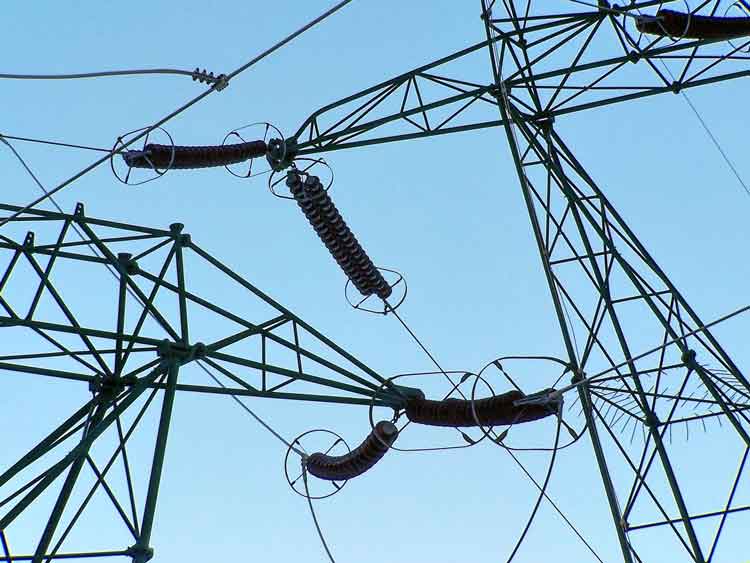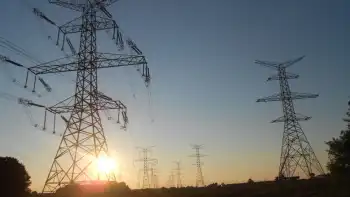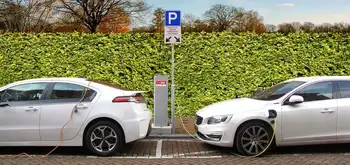Clean energy policy creating demand
By Hartford Courant
NFPA 70b Training - Electrical Maintenance
Our customized live online or in‑person group training can be delivered to your staff at your location.

- Live Online
- 12 hours Instructor-led
- Group Training Available
Although monthly customer bills don't show it, 5 percent of electricity delivered by Connecticut Light & Power and United Illuminating this year must be generated from renewable sources such as wind, water or the sun. The requirement is set to go up every year until 2020, when it reaches 20 percent.
The aggressive policy in Connecticut, combined with similar requirements in neighboring states, is sparking an unprecedented demand for renewable power in the region. The idea is to prod alternative sources of electricity to spring up as all consumers pay more for the extra benefits of clean generation.
But even with a rush of proposals and widespread political support, there is a growing debate over whether the fledgling and disparate alternative energy industry can meet the rising requirements. Even at this year's level, some say it's a struggle.
The state rules call for penalties paid through consumers' electric rates if the goals aren't met. Millions of dollars already are due.
Ultimately, Connecticut consumers could end up paying more for electricity "without necessarily promoting new renewable generation to displace conventional generation," according to a recent report prepared by The Brattle Group, a Cambridge, Mass., consulting firm for UI and CL&P.
Northeast Utilities, CL&P's parent company, estimates that New England needs to be able to generate — or import from New York and eastern Canada — billions of kilowatt-hours of additional renewable electricity to meet the regional requirements. Getting there would require 2,200 wind turbines or 8.2 million solar panels by 2020, NU estimates.
The penalties could total $200 million a year within three years, according to the Brattle Group report.
Any penalty payments would go to the Connecticut Clean Energy Fund, which is charged with developing alternative sources of power. But the state agency still hasn't broken ground on its first large-scale renewable project after more than three years of work. The fund is under investigation by the state attorney general for possible misuse of money, and the General Assembly has taken money out of its treasury for purposes unrelated to energy.
Renewable energy advocates are challenging Brattle's findings, saying a flood of clean energy projects are in the pipeline. The demand created by the ambitious state requirements make the projects — unheard of just a few years ago — viable alternatives in an industry long dominated by oil, coal and nuclear plants, they say.
Public and political support is strong not only because of growing concern over global warming and U.S. dependence on foreign oil, but also because the new energy sources promise to create "green collar" jobs in New England.
Still, it is unclear how many of the wind turbines, biomass boilers and fuel-cell farms will actually get built. Some projects are facing the same local resistance as traditional power plants — from people who don't want to live near them. Financing remains a challenge, especially at a time of tighter credit, because of the need for upfront costs and the risk that public policy will change.
"There is tons of stuff in concept," said Carrie Cullen Hitt, vice president of renewable products for Constellation NewEnergy. "The question is: Do they make it over the finish line?"
So far, Connecticut has relied heavily on clean generators — some built a decade or more ago — that run on wood, methane from landfills and the rush of rivers to keep up.
CL&P and UI say they're struggling to find cleanly generated electricity in the right quantity and price to fulfill the mandates. Reports filed last month for 2006 show that both UI and CL&P failed to meet the 2 percent requirement. The 2007 report won't be available until early next year.
The Brattle Group study warned that Connecticut's requirements will increase just as similar rules take effect in Massachusetts and Rhode Island. And although projects are being proposed at record levels, renewable generation proposals often die, the report said.
"I think people are starting to wonder where all these new resources are going to come from — and at what price," said Dennis Hrabchak, vice president of corporate affairs for UI, which delivers power in the New Haven and Bridgeport areas.
The clean energy fund has challenged Brattle's findings, along with renewable-energy developers and environmental groups.
An analysis for the fund estimates a modest shortage in renewable power, or maybe none at all, requiring limited penalty payments over the next several years.
"The assumptions ... regarding renewable supply in Connecticut are not current, accurate or well researched," the fund wrote in a filing with state energy officials.
Under the region's electricity market system, credit certificates are issued to renewable projects to sell as they generate electricity. Because the credits have value, they provide added compensation to clean generators.
Without them, most renewable projects couldn't compete in an electricity market dominated by decades-old power plants.
CL&P and UI buy renewable energy credits through their energy brokers; they do not deliver different types of electricity to customers, since there is only one distribution system.
Utility officials, regulators and energy developers agree that failing to meet the requirements in these early years does not necessarily mean there wasn't enough green power. The penalties could be the same price or cheaper than the credits.
Already, some Connecticut residents register to buy cleanly generated electricity, voluntarily, for a slightly higher price. But those kilowatt hours don't count toward the standards.
Developers say the market is responding to the demand being created by the state policies. ISO New England, which operates the region's grid, lists more than three dozen proposed renewable projects. Those who follow the market estimate many more are in development.
The requirement that rises to 20 percent applies to so-called Class I renewable power — wind, clean biomass, solar, tidal, fuel cell and some hydro power. Connecticut itself has limited natural resources to harness for those types of sources.
Research shows the state has little potential for wind power. Three proposed plants that would run on wood are likely to be the most Connecticut could supply. Solar is growing in popularity, but requires a complex process of bringing together thousands of micro-projects at homes and businesses.
The rest of New England has more potential. Cape Wind, a controversial project for an offshore wind farm in Nantucket Sound, is the best known wind project in the region, but there are others.
Essex-based Noble Environmental Power is part of the booming interest in wind. Only 4 years old, the clean energy developer already has massive turbines spinning in upstate New York.
It's planning 1,000 megawatts — enough electricity to power upward of a million typical homes — in northern New England.
"We are attracted to this part of the country, and developing projects in the region, because there are strong incentives here," said Anna Giovinetto, vice president of public affairs for Noble.
One way Connecticut officials say they can keep up with the requirements is by helping to get wind projects built in Maine, New Hampshire and other New England states.
The clean energy fund is looking at ways for the utilities to reach long-term contracts with out-of-state wind projects. That would help developers attract loans and other financing to build, said Paul Michaud, director of regulatory policy for the clean energy fund.
As it warns public officials about a shortage of renewable energy, NU is also pitching itself as part of the solution — by building high-voltage transmission lines to deliver the alternative energy to Connecticut.
NU has seen growth in the development of transmission lines, a lucrative business for the utility at a time when demand for electricity is flat. NU'S top executives have been talking with investors and regulators about an extensive plan to build lines to bring power from northern New England and eastern Canada — where wind and hydroelectric generation is being developed.
The need for the new transmission lines becomes even more critical, according to NU calculations, as regional caps on the amount of global warming gases power plants can emit go into effect in the coming years.











